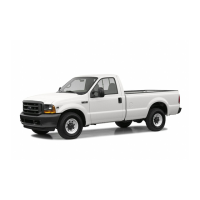
Do you have a question about the Ford 2003 F-250 and is the answer not in the manual?
| Brand | Ford |
|---|---|
| Model | 2003 F-250 |
| Category | Automobile |
| Language | English |
Warning about chemicals in engine exhaust and vehicle components.
Welcome message and advice on getting acquainted with the vehicle.
Explains warning lights and gauges alerting to vehicle conditions.
Details various gauges like speedometer, coolant temp, oil pressure.
Describes controls for the AM/FM stereo system.
Details controls for the AM/FM stereo cassette player.
Explains controls for premium stereo with CD and CD changer.
Explains fan speed, temp selection, and air flow for heater only.
Details fan speed, temp, and air flow selections for HVAC.
Operation of headlamp and automatic lighting systems.
Control of foglamps, daytime running lamps, and high beams.
Operation of panel dimmer and turn signal controls.
Operation of interior lamps and exterior bulb replacement.
Operation of wipers/washers and changing blades.
Adjusting steering wheel and operating transmission controls.
Features of the overhead console, storage, and garage opener install.
How to operate the one-touch moon roof system.
Using power outlets and operating power windows.
Window lock feature and power mirror adjustment.
Operation of heated and signal mirrors.
Information on running lamps and folding mirrors.
Adjusting pedals and setting speed control.
Resuming, increasing, and reducing speed with cruise control.
How to turn off speed control and understanding the indicator light.
Center console features, cell phone safety, and trip computer.
Changing display units and controlling trip computer modes.
Understanding fuel range and outside air temp displays.
Adjusting the compass zone for geographic location.
Calibrating compass and tailgate lock/removal procedures.
Information on keys, power locks, and smart lock features.
Childproof locks and remote entry system compliance warnings.
Describes unlocking and locking doors using the remote entry system.
Features for disabling power unlock and sounding a panic alarm.
Replacing transmitter batteries and reprogramming lost transmitters.
Steps for transmitter reprogramming and illuminated entry/autolock.
Procedure to activate/deactivate the autolock feature.
Seat safety notes and full bench seat adjustment.
Adjusting split bench seats and armrest function.
Adjusting captain's chairs and front power seat.
How to adjust front and rear seat cushion portions.
Manual lumbar, heated seats, and rear seat folding.
Returning seats to position and general safety restraint precautions.
Instructions on fastening and using lap and shoulder belts.
Explains vehicle-sensitive and automatic locking modes for belts.
Steps for using and disengaging the automatic belt locking mode.
Details energy management and belt replacement labels.
Explains the function and operation of safety belt pretensioners.
Guides on adjusting the front safety belt height.
Instructions on adjusting lap belts for different seating positions.
Explains the seatbelt warning light and BeltMinder feature.
Details BeltMinder operation and reasons for seatbelt use.
Instructions for temporarily disabling and deactivating BeltMinder.
Step-by-step guide for activating/deactivating BeltMinder.
Information on belt extension assemblies and system maintenance.
Key safety precautions for the SRS system.
Warnings about modifying the air bag system and adding equipment.
Safety advice for children with air bags and how the SRS works.
Details SRS components and how to check system operation.
SRS issues, disposal, and passenger air bag switch operation.
Step-by-step guide for turning the passenger air bag off and on.
Passenger air bag usage with children and general safety.
Criteria for deactivating the passenger air bag system.
Deactivation criteria specific to Transport Canada.
Key precautions for child restraints and safety belt use.
Information on when and how to use child booster seats.
Discusses booster seat types and the necessity of shoulder belts.
General advice on using child and infant safety seats.
Step-by-step instructions for installing child safety seats.
Details installing child seats using lap and shoulder belts.
Guides on securing child seats using the automatic locking mode.
Instructions for attaching child seats using tether straps.
Shows tether strap anchor locations and attachment procedures.
Specific instructions for SuperCab rear tether strap attachment.
Guidance on tightening tether straps for secure installation.
Explains the different ignition key positions and their functions.
Pre-start checks and important safety precautions.
Procedures for starting vehicles with automatic and manual transmissions.
Steps for starting the engine and checking indicator lights.
Information on engine block heater use and exhaust fume safety.
Explains the ABS warning lamp and how to use the ABS system.
Instructions on setting and releasing the parking brake.
Covers steering system precautions and Traction-Lok axle.
Explains the brake-shift interlock feature and troubleshooting.
Details the P, R, N, and D gearshift positions.
Explains overdrive deactivation and drive modes.
Covers shift strategy and 5-speed automatic transmission operation.
Details the Tow/Haul feature for transmission operation.
Explains the use of lower gears and forced downshifts.
Instructions on using the clutch and manual transmission.
Guides on recommended downshift speeds and reverse operation.
Explains RSS operation, limitations, and safety advice.
Details RSS sensor care and indicator light function.
Explains engaging/disengaging the manual 4WD system.
Details ESOF 4x4 system and indicator lights.
Guides on shifting between 2WD High, 4WD High, and 4WD Low.
Procedures for shifting from 4WD High to Low and vice-versa.
Explains positions of the electronic shift system.
Guides on shifting using the electronic 4WD system.
Advice for off-road driving with 4WD trucks and utility vehicles.
General operating principles and actions for going off-pavement.
Guidance for stuck vehicles and emergency driving maneuvers.
Parking procedures and overview of 4WD systems.
Advice for driving in sand, mud, and water conditions.
Warnings about deep water and advice for driving on hills.
Tips for driving safely in snowy or icy conditions.
Important precautions regarding tire and wheel replacement.
Guidance on tire maintenance and vehicle modifications.
Information on PTO operation and driving through water.
Definitions of terms like GVW, Payload, GCWR, etc.
How to calculate load capacity and trailer towing guidelines.
Tables showing towing capacities for different models.
More towing capacity tables for various configurations.
Towing capacity data for SuperCab models.
Towing capacity data for SuperCab and Crew Cab models.
Towing capacity data for Crew Cab models.
Towing capacity data for F-350 models.
Towing capacity data for F-350 Regular Cab Dual Rear Wheel.
Towing capacity data for F-350 SuperCab models.
Towing capacity data for F-350 SuperCab models.
Towing capacity data for F-350 SuperCab Dual Rear Wheel.
Towing capacity data for F-350 SuperCab Dual Rear Wheel.
Towing capacity data for F-350 Crew Cab models.
Towing capacity data for F-350 Crew Cab models.
Towing capacity data for F-350 Crew Cab Dual Rear Wheel.
Towing capacity data for F-450 Regular Chassis Cab.
Towing capacity data for F-450 Regular Chassis Cab.
Towing capacity data for F-450 Crew Cab Chassis.
Towing capacity data for F-450 Crew Cab Chassis.
Towing capacity data for F-550 Regular Chassis Cab.
Towing capacity data for F-550 Regular Chassis Cab.
Towing capacity data for F-550 Crew Cab Chassis.
Towing capacity data for F-550 Crew Cab Chassis.
Guidelines for using trailer hitches and tongue weight.
Procedures for using load equalizing hitches and safety chains.
Trailer brake info, lamps, and towing advice.
Ensures transmission is not damaged when towing the vehicle.
Information on preparing the vehicle for snowplowing.
Steps for installing and removing a snowplow.
Advice on snowplowing with air bags and managing engine temp.
Guidance on 4WD operation specific to snowplowing.
Information on Ford's complimentary roadside assistance program.
Operation of hazard flashers and fuel pump shut-off switch.
Explains how fuses work and how to identify blown fuses.
Table detailing fuse ratings, colors, and types.
Lists fuse locations, amp ratings, and descriptions.
Continues the list of fuse locations and descriptions.
Continues the list of fuse locations and descriptions.
Steps for changing a flat tire and spare tire details.
Details where the spare tire and tools are stored.
Step-by-step instructions for removing the spare tire.
General steps for changing a tire, including safety precautions.
Guides on correct jack placement for specific truck models.
Continues jack placement guides for specific truck models.
Warnings on jacking points and specific steps for certain models.
Continues jack placement guides for specific truck models.
How to use hydraulic jacks and tighten lug nuts.
Final lug nut tightening and torque specs.
Safety on wheel mounting and stowing the spare tire.
Steps to prepare the vehicle for jump starting.
How to connect the positive jumper cables.
Connecting negative cables and the jump start process.
Instructions for removing jumper cables in reverse order.
Completing cable removal and idle relearn process.
Guidelines for towing with a wrecker service or program.
Warnings about incorrect towing and towing manual availability.
How to get service at your selling dealership or others.
How to find service when away from home.
Information on purchasing extended service plans for protection.
Details types of cases reviewed by the Dispute Settlement Board.
Information needed for case review and oral presentations.
How the Board makes decisions and requests for information.
Info on CAMVAP program and foreign assistance.
How to order literature and CA consumer rights.
How to report safety defects to NHTSA and Ford.
Proper steps and precautions for washing the vehicle exterior.
Tips for paint chip repair and cleaning aluminum wheels.
Engine cleaning precautions and care for plastic exterior parts.
Cleaning the instrument panel, interior trim, and general interior.
Cleaning and conditioning for standard leather seats.
Specific care for premium leather seats in certain models.
Applying conditioner, underbody flushing, and scratch care.
Listing recommended cleaning and care products.
Advice on routine maintenance and professional service.
Safety precautions for servicing and opening the hood.
Identifies engine components for gasoline engines.
Instructions on adding and using windshield washer fluid.
Procedure for checking the engine oil level.
Steps for adding engine oil to the correct level.
Recommends specific engine oil and filter types.
Guides on battery maintenance, electrolyte levels, and safety.
Precautions for handling batteries and engine relearning after disconnection.
Information on recycled coolant and refill capacities.
Coolant requirements for severe climates and fail-safe cooling info.
Details coolant types, mixing, and precautions.
Instructions for adding coolant and checking its concentration.
Coolant concentration guidelines for cold and hot climates.
Explains how the fail-safe cooling system works and its limitations.
Driving in fail-safe mode and safety for automotive fuels.
Safety guidelines for handling automotive fuels.
Proper use of the fuel filler cap and refueling safety.
Advice on selecting the correct fuel and octane rating.
Info on cleaner air, fuel filter, and running out of fuel.
Methods for measuring fuel economy and filling the tank.
Steps to calculate economy and improve habits.
Tips for improving fuel economy and maintenance under various conditions.
Understanding the EPA sticker and emission system maintenance.
Explains OBD-II system and I/M testing readiness.
Procedure for checking and adding power steering fluid.
Checking brake fluid and clutch fluid levels.
How to check automatic transmission fluid level.
Explains correct, low, and high transmission fluid levels.
Procedures for adjusting fluid levels and filter replacement.
Steps for checking and adding manual transmission fluid.
Procedures for transfer case fluid and air filter maintenance.
Step-by-step guide for changing the air filter element.
Details Treadwear, Traction, and Temperature grades.
Importance of checking tire pressure and proper inflation.
Tire inflation for F450/F550 and tire rotation procedure.
Illustrates four, five, and six tire rotation patterns.
When to replace tires and using snow tires and chains.
Guidelines for safe use of snow tires and chains.
Lists Motorcraft part numbers for various engine components.
Specifies refill capacities for the front axle.
Lists capacities for rear axle, brake fluid, coolant, and engine oil.
Lists capacities for fuel tank, power steering, transmission, and washer fluid.
Explains fluid types, labels, and usage notes for transmissions.
Details lubricant specs for axles, brakes, and clutch.
Covers lubricant specs for coolant, oil, and various grease points.
Lists lubricant specs for manual and automatic transmissions, and washer fluid.
Provides engine data and F250 dimensions.
Continues F250 dimensions for Crew Cab models.
Details F350 dimensions for various cab styles.
Continues F350 dimensions for Crew Cab models.
Provides F450 dimensions for various cab styles.
Details F550 dimensions for various cab styles.
Continues F550 dimensions for various cab styles.
Continues F550 dimensions for various cab styles.
Explains the location and purpose of the vehicle certification label.
Locating the VIN and engine number for vehicle identification.
Information on genuine Ford accessories and their warranty.
Lists various accessories like cargo systems, lighting, and protection equipment.
More accessories and advice on adding them without exceeding limits.
Warnings about mobile systems and handling high-center-of-gravity vehicles.
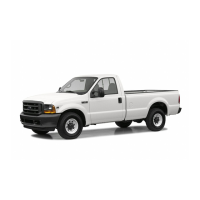

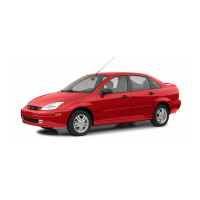
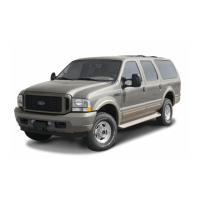
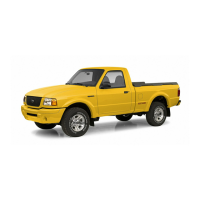
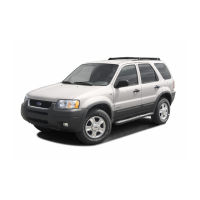
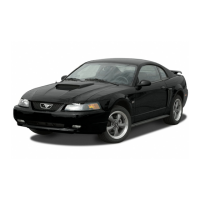
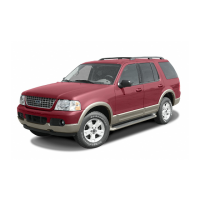
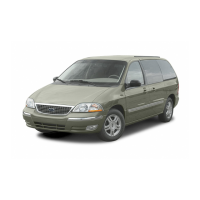
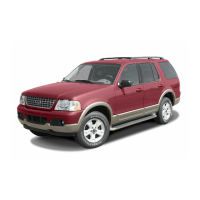
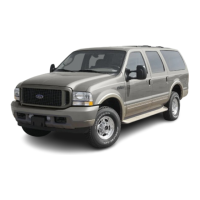
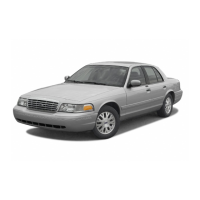
